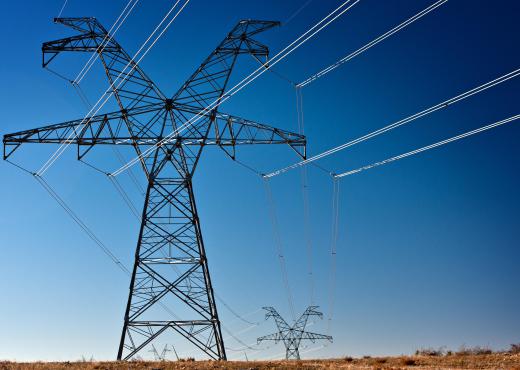The most common applications for alternating (AC) current are in producing and transporting electricity. Nearly every home around the world is powered through the benefit of AC current, as opposed to direct current (DC), which is used in batteries. The use of this type of current over DC current is mainly because of issues involving cost, power loss, and conversion issues from higher voltage to lower voltage.
Before explaining why these uses for AC current are the most common, it is necessary to understand a little about this type of electricity. These currents are created by rotating a magnet around wire coils that remain still. As one end of the magnet is positive and one is negative, it causes the coils to produce an electric wave. The frequency of this wave varies, but is between 50 and 60 times a minute for most power generators.

AC current is very popular for power generation because the machines to generate that power are much less expensive and easier to produce than those associated with DC current. Further, DC current can produce a great deal of heat and even reach flash points, meaning the possibility of fire is greater than that of AC current. For these reasons, most of the electricity that is generated is with AC technology.

While that advantage alone may be reason enough to use AC for power generation, AC power is also the preferred method for transport in short to medium range distances, such as those less than 500 miles (approximately 800 km). The current moves well through lines with minimal power losses over most distances on a grid. Therefore, the voltage remains much more stable than that of DC current over this time, and also is more efficient when it comes to conversion. In order to get the same amount of voltage using DC to a final destination involving longer distances, the voltage at the origin would need to be much higher.
The other application for AC current involves decreasing the voltage for use in homes and other applications. This is done with the use of a transformer where one inductive coil is used to transfer power to another inductive coil. This process, depending on how it is done, may increase or decrease the voltage. In the case of home use, the voltage needs to be decreased from high voltage to low voltage so that it can be used safely by electrical devices within the home. Another smaller transformer may be at the site of the home or building for a further reduction in voltage.
